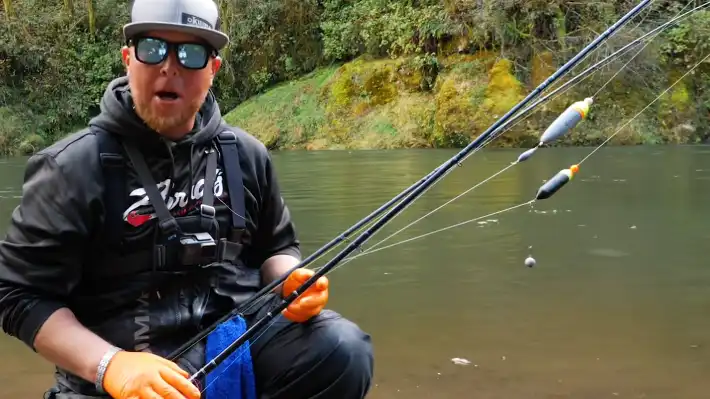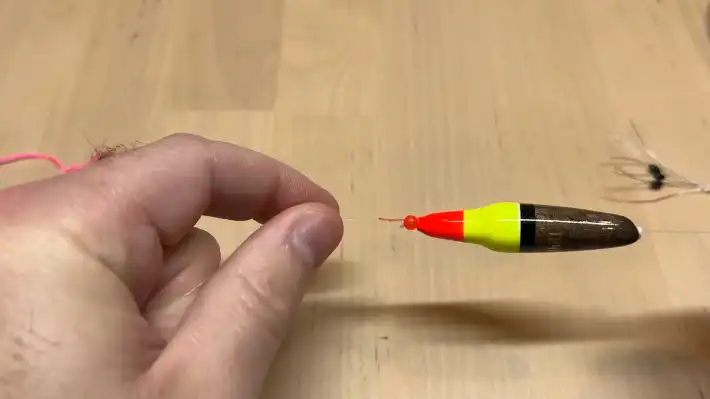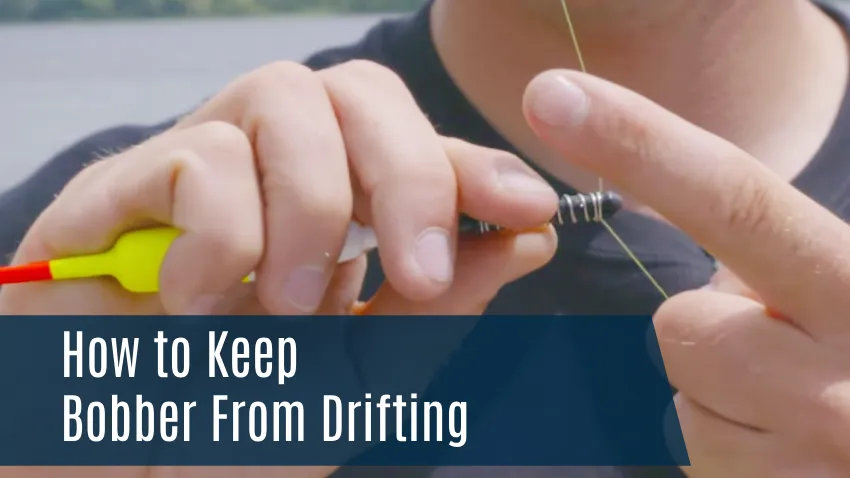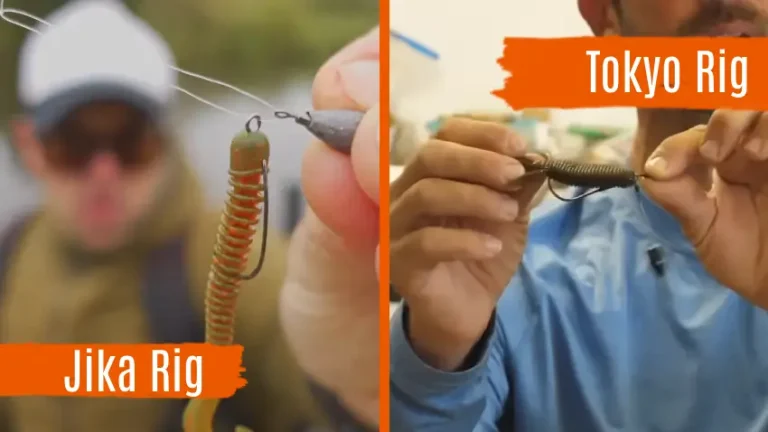How to Keep Bobber From Drifting: 5 Tips for Fishing
Fishing, a timeless pursuit, often encounters challenges that test an angler’s skill and adaptability. One such challenge arises when the wind asserts its influence, pushing bobbers away from the optimal fishing zones. Anglers must employ a few clever tricks to keep bobbers from drifting away.
Based on my findings, strategically position yourself in an area with minimal current or wind. Adjust the depth of your bobber float rig to ensure it stays in place. Use adequate weight to keep the bobber stable. Also, try a slip bobber rig or utilize drift fishing techniques for better control.
Here, I have some excellent tips to help you keep that bobber right where it should be, in your sights. Following a few simple techniques can prevent your bobber from drifting away and ensure a successful fishing trip.
How to Keep Bobber From Drifting: Tips to Consider

To keep your fishing bobber float rig from drifting, there are several key points to consider. And I listed here the most important points:
- Strategic positioning
- Adjusting bobber depth
- Using adequate weight
- Consider a slip bobber rig
- Utilizing drift fishing techniques
Tip 01: Strategic Positioning
Position yourself strategically upwind from the dock to keep the fishing bobber from drifting. By casting the bobber slightly upwind, you can take advantage of the natural drift caused by wind and water currents.
This deliberate placement allows the bobber to float away from the dock, reducing the chances of it getting tangled or caught on any obstacles.
Being upwind also gives you better control over the fishing zone, as the bobber will move in the desired direction. When positioning yourself, consider the strength and direction of the wind and the current in the water.
You can increase your chances of catching fish by keeping the fishing bobber from drifting by considering these factors and positioning yourself strategically upwind.
Tip 02: Adjusting Bobber Depth
Keep your fishing bobber at the right depth to prevent excessive drift and increase your chances of catching fish in windy conditions. Experimentation with the bobber depth is crucial for finding the sweet spot where your bait remains enticingly close to the target area without drifting too far.
Start by casting your line and letting the bobber float rig settle on the water’s surface. Then, reel in the line slightly to raise the bobber and adjust the depth. If the bobber moves too much, indicating excessive drift, I suggest lowering the bobber to keep your bait in the desired fishing zone.
Tip 03: Using Adequate Weight
Add the right amount of weight using one or two split shots to prevent your fishing bobber from drifting. By incorporating split shots, you can counteract the influence of wind and current, ensuring that your bobber remains stationary in the water.
The weight anchors the bobber, preventing it from being carried away and allowing you to maintain control over its position. One or two split shots should be sufficient, but it’s essential to find the right balance.
Adding too much weight can cause the bobber to sink too deep, while too little weight may not provide enough stability. Experiment with different amounts until you achieve the desired result, keeping your bobber float rig in the desired fishing zone.
Tip 04: Consider a Slip Bobber Rig
Consider using a slip bobber rig to further enhance your control over the fishing bobber and prevent it from drifting. Opting for a slip bobber rig provides precise control over the depth, allowing you to fish at specific levels without the limitations of a fixed bobber.
This type of rig consists of a bobber stop, a bead, a slip bobber, and a weight. The bobber stop is placed on the fishing line, followed by the bead. The slip bobber is then threaded onto the line, followed by the weight. The bobber stop prevents the slip bobber from sliding down the line while the weight keeps the rig steady.
I think slip bobber float rigs make it easier to adjust the depth and keep your bait in the strike zone for longer, increasing your odds.
Tip 05: Utilizing Drift Fishing Techniques
Keep your fishing bobber under control by using drift fishing techniques. Drift fishing involves casting upwind and allowing the bait to glide naturally toward your target area. By embracing the wind’s influence, you can turn it into an asset rather than a hindrance.
This technique lets you control your fishing setup and keep your bobber in place. To effectively utilize drift fishing techniques, cast your line upwind and let it drift with the current. This will help you cover more water and increase your chances of attracting fish.
Adjust your casting angle and distance to ensure your bait remains in the desired area. Mastering drift fishing techniques can improve your fishing success and prevent your bobber float rig from drifting away.
Why does my bobber float sideways?
If your bobber is floating sideways, it may be because your bait rests on the bottom, indicating that you have set your line too deep and need to adjust your bobber stop.
The bait on the bottom creates drag that causes the bobber to tilt to one side. To fix this issue, I recommend considering adjusting the depth at which you have set your bobber stop.
Raising or lowering the bobber stop ensures that your bait is suspended at the desired depth and not touching the bottom. This will help your bobber to float upright, improving your chances of detecting bites and catching fish.
Does the bobber stop go above or below the bobber?

Place the bobber stop above the bobber to ensure proper depth control and prevent drifting. By placing the bobber stop above the bobber, you create a fixed point on your fishing line that determines the depth at which your bait will be suspended.
This is important because it allows you to target specific depths where fish are most likely to feed. I believe that if the bobber stop is placed below the bobber, it can interfere with the movement of the bobber and cause it to drift or float sideways, making it difficult to gauge the depth of your bait accurately.
Is it better to fish without a bobber?
According to my findings, bobbers aren’t necessary in most situations, as they can hinder your fishing success.
Without a bobber, you have more control over your presentation and can more accurately mimic the natural movement of bait or lures. This can be especially effective when targeting larger, more skittish fish.
However, I recommend a bobber to give beginners a visual reference and help them get used to deep-sea fishing. With practice, you’ll gain confidence in your abilities and be able to ditch the bobber for good.
Master the Art of Preventing Bobber Drift
In my opinion, mastering the art of preventing bobber drift becomes a crucial skill as the wind continues to be an adversary for anglers seeking the perfect catch.
From positioning and adjusting bobber depth to using enough weight and specialized gear like slip bobbers, anglers have many options. Anglers who embrace windy conditions and use drift fishing techniques to take advantage of them add a layer of finesse to their game.
Anglers emerge from the dance between wind and water with the ability to keep their fishing bobber in the sweet spot, where magic bites are waiting. Fishing’s enduring allure is a testament to the angler’s adaptability and strategic prowess in swirling currents and wind.


